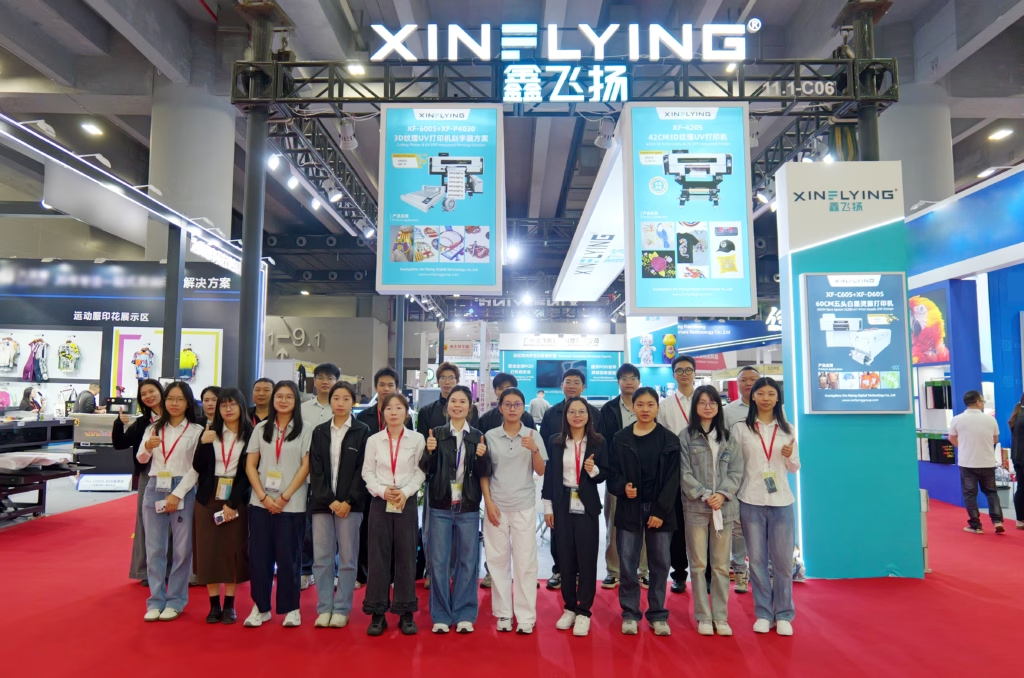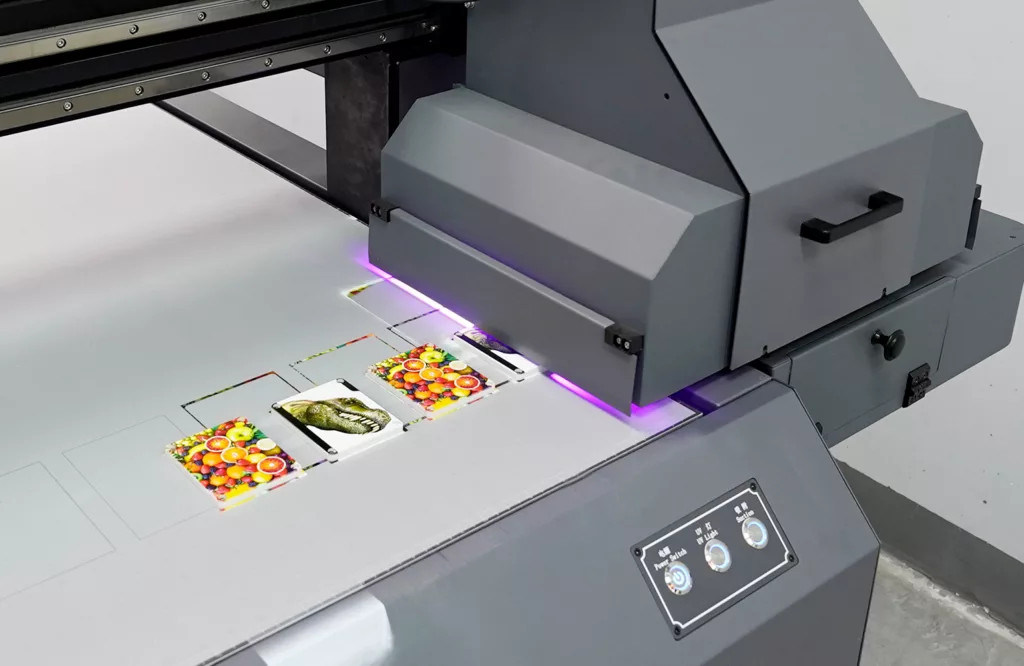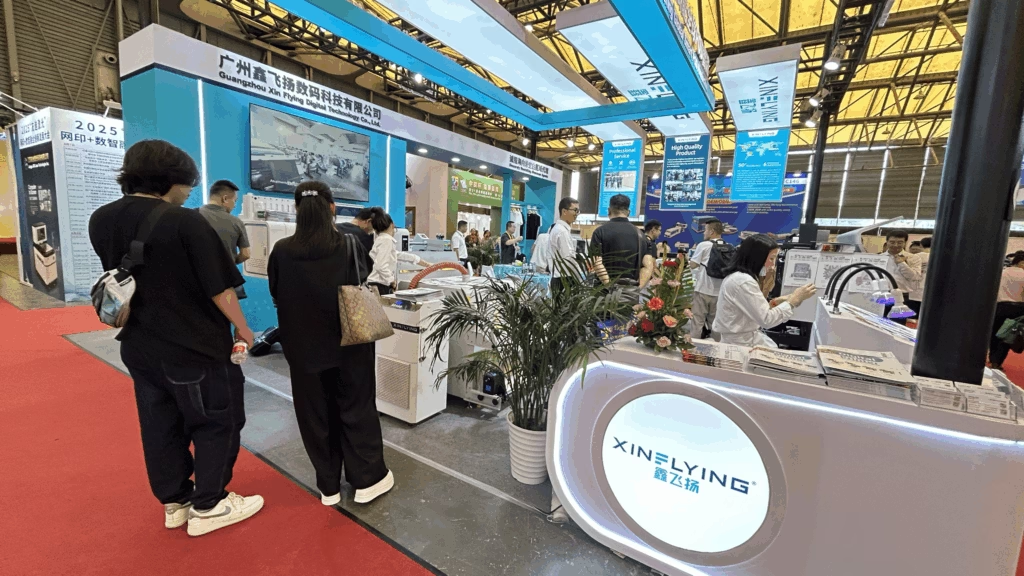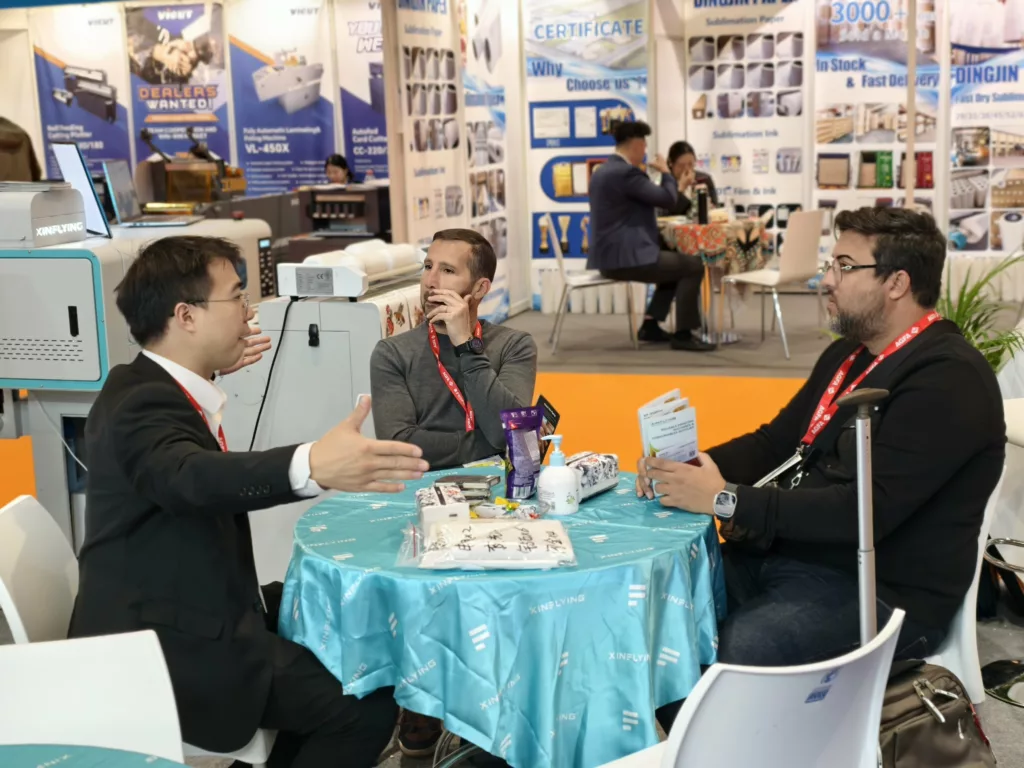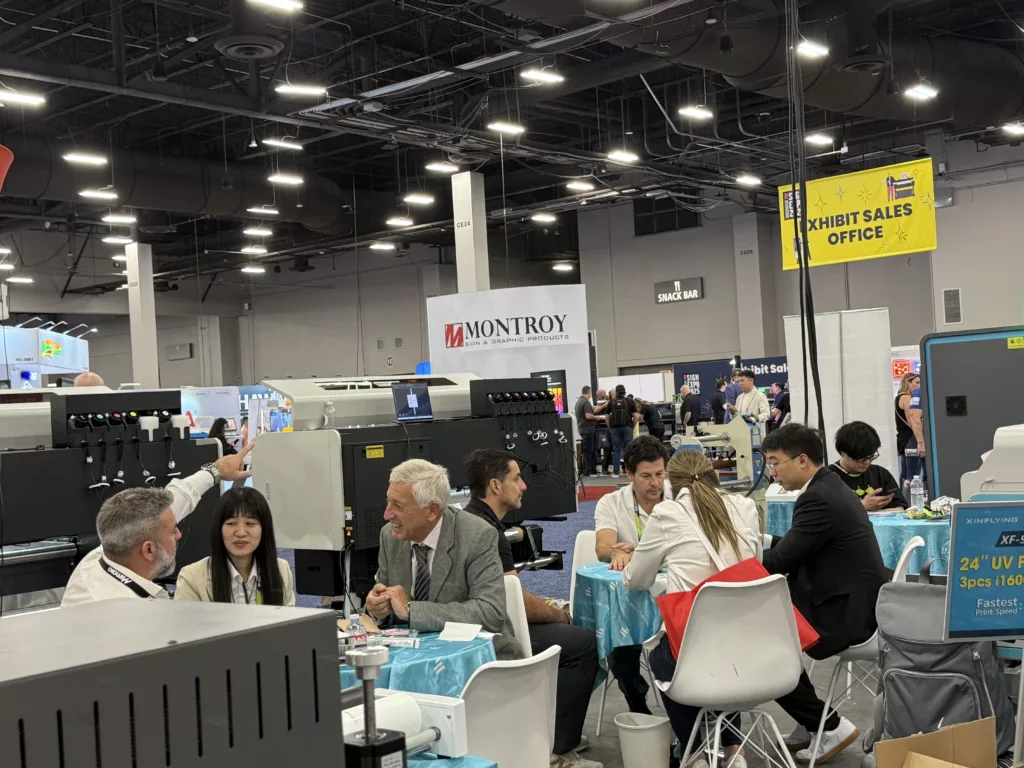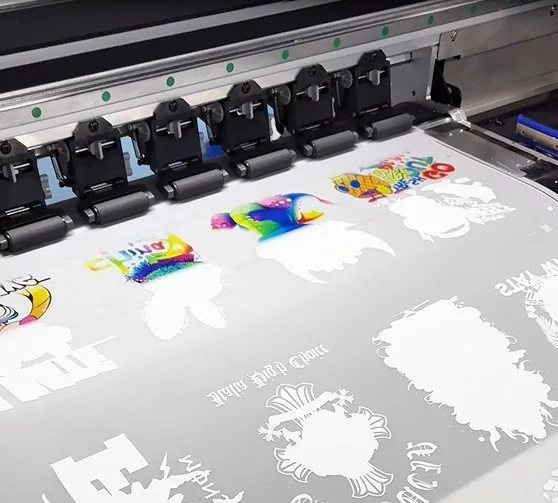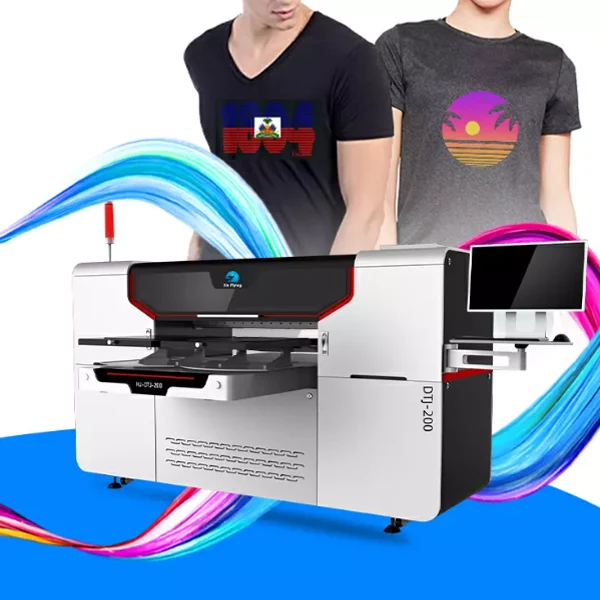
Ngành may mặc đã trải qua sự chuyển đổi đáng kể với sự ra đời của máy in quần áo. Những thiết bị cải tiến này đã cách mạng hóa cách chúng ta tạo ra quần áo được thiết kế riêng và mang lại kỷ nguyên cá nhân hóa mới.
Trong bài viết này, chúng ta sẽ khám phá các loại máy in quần áo khác nhau, lợi thế của họ, những yếu tố cần cân nhắc khi lựa chọn một, cách sử dụng chúng một cách hiệu quả, và hơn thế nữa.
Tìm hiểu về máy in may mặc
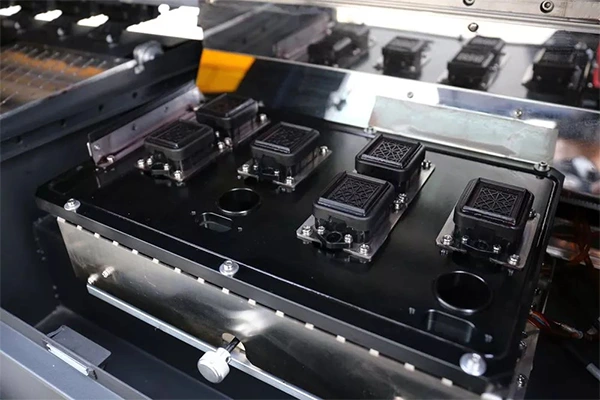
Máy in quần áo, còn được gọi là máy in quần áo, là những thiết bị chuyên dụng cho phép bạn in các thiết kế tùy chỉnh trực tiếp lên hàng may mặc. Họ sử dụng công nghệ in tiên tiến để chuyển thiết kế, hoa văn, hoặc hình ảnh lên các loại vải khác nhau với độ chính xác và khả năng tái tạo màu sắc sống động. Những chiếc máy này đã trở nên không thể thiếu trong ngành may mặc, cho phép các doanh nghiệp cung cấp các sản phẩm được cá nhân hóa và đáp ứng nhu cầu ngày càng tăng về quần áo độc đáo và tùy chỉnh.
Ưu điểm của máy in may mặc
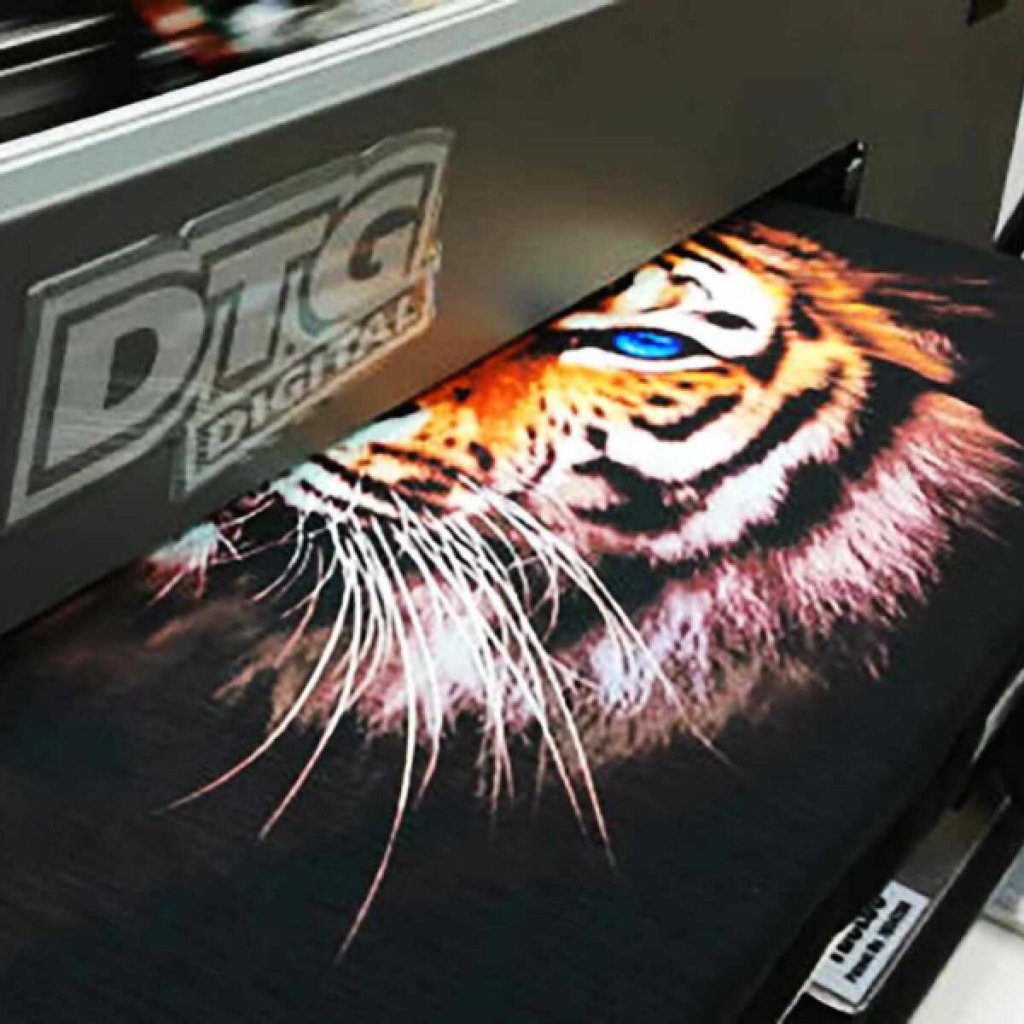
Máy in quần áo mang lại nhiều ưu điểm so với phương pháp in truyền thống, làm cho chúng trở thành sự lựa chọn ưa thích của nhiều doanh nghiệp và cá nhân.
Trước hết, những máy này cung cấp tính linh hoạt chưa từng có, cho phép bạn in các thiết kế phức tạp, Đồ họa chi tiết, và thậm chí cả những bức ảnh trên quần áo. Họ cung cấp các bản in chất lượng cao và bền, chống phai màu, vết nứt, hoặc bong tróc theo thời gian.
Ngoài ra, máy in quần áo cung cấp thời gian quay vòng nhanh chóng, cho phép bạn thực hiện đơn hàng một cách hiệu quả. Không giống như các phương pháp truyền thống như in màn hình, đòi hỏi quá trình thiết lập và dọn dẹp tốn thời gian, máy in hàng may mặc đã sẵn sàng để sử dụng với sự chuẩn bị tối thiểu. Điều này làm cho chúng trở nên lý tưởng cho cả sản xuất quy mô nhỏ và quy mô lớn..
Các loại máy in may mặc khác nhau
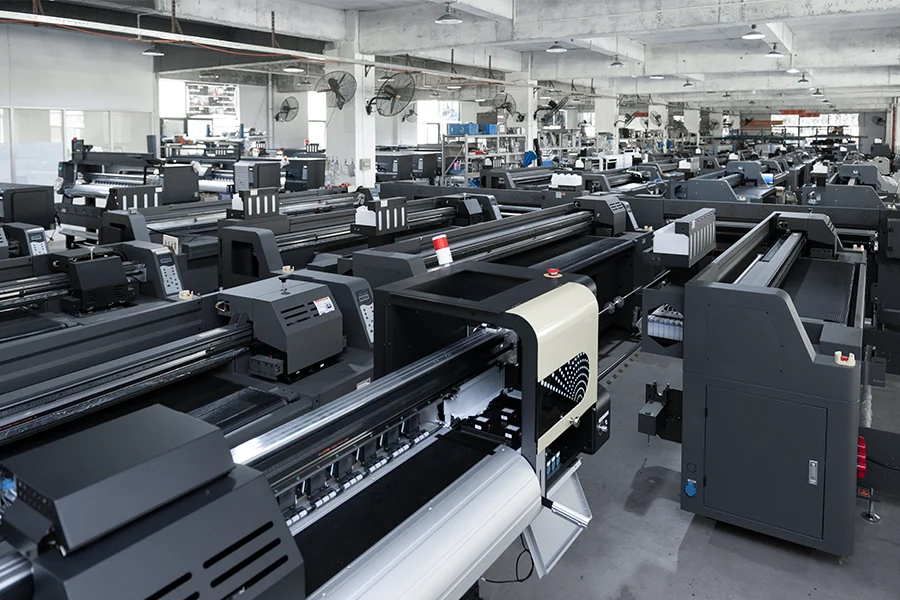
Trên thị trường có một số loại máy in quần áo, mỗi loại có tính năng và phương pháp in độc đáo. Hiểu được sự khác biệt giữa chúng có thể giúp bạn đưa ra quyết định sáng suốt khi chọn máy phù hợp với nhu cầu của mình. Hãy cùng khám phá những loại phổ biến nhất:
4.1 Trực tiếp đến hàng may mặc (DTG) Máy in
Máy in DTG được thiết kế để in trực tiếp lên quần áo bằng công nghệ in phun. Những máy này cung cấp độ chính xác và chi tiết màu sắc vượt trội, làm cho chúng phù hợp với các thiết kế phức tạp và bản in nhiều màu. Máy in DTG rất linh hoạt và có thể xử lý nhiều loại vải, bao gồm bông, hỗn hợp polyester, và thậm chí cả quần áo tối màu.
4.2 Máy in lụa
Máy in lụa sử dụng màn lưới để truyền mực lên quần áo. Phương pháp này thường được sử dụng để in số lượng lớn do tính hiệu quả và tiết kiệm chi phí.. Máy in lụa có thể tạo ra các bản in sống động và lâu dài, đặc biệt là trên các loại vải sáng màu. Tuy nhiên, chúng có thể cần nhiều thời gian thiết lập hơn và ít phù hợp hơn với các thiết kế phức tạp hoặc số lượng in nhỏ.
4.3 Máy in chuyển nhiệt
Máy in chuyển nhiệt sử dụng nhiệt để truyền thiết kế lên sản phẩm may mặc. Chúng hoạt động bằng cách truyền nhiệt và áp suất lên giấy chuyển hoặc nhựa vinyl chuyên dụng., sau đó được chuyển lên vải. In chuyển nhiệt rất linh hoạt và có thể được sử dụng trên nhiều vật liệu khác nhau, bao gồm bông, polyester, và vải thun. Nó thường được sử dụng để tạo áo phông tùy chỉnh, áo thể thao, và trang phục quảng cáo.
4.4 Máy in thăng hoa
Máy in thăng hoa sử dụng mực nhạy nhiệt chuyển đổi từ chất rắn sang chất khí khi được làm nóng. Khí này thấm vào sợi vải, mang đến những bản in sống động và lâu dài. In thăng hoa là giải pháp lý tưởng cho vải polyester và mang lại độ bền và độ sống động màu sắc tuyệt vời. Nó thường được sử dụng để tạo ra các thiết kế rực rỡ và đầy màu sắc trên đồng phục thể thao, quần áo năng động, và quần áo làm từ polyester.
Các yếu tố cần xem xét khi chọn máy in quần áo
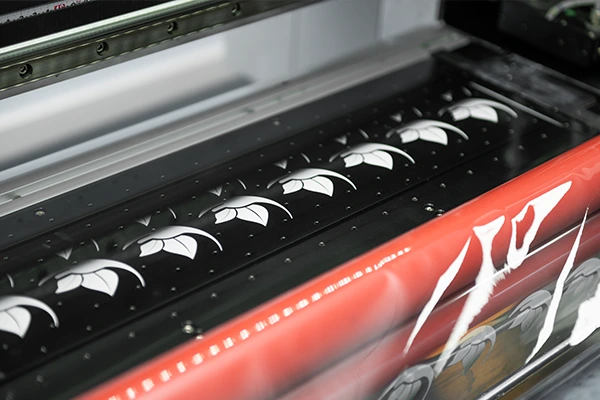
Khi lựa chọn máy in quần áo, điều cần thiết là phải xem xét nhiều yếu tố khác nhau để đảm bảo nó phù hợp với yêu cầu kinh doanh của bạn. Dưới đây là một số cân nhắc chính:
5.1 Khối lượng và tốc độ in
Đánh giá khối lượng in và yêu cầu tốc độ của doanh nghiệp bạn. Nếu bạn có nhu cầu sản xuất cao, lựa chọn máy có tốc độ in nhanh và có thể xử lý khối lượng lớn quần áo một cách hiệu quả.
5.2 Chất lượng in và độ phân giải
Hãy tìm một chiếc máy cung cấp chất lượng in và độ phân giải tuyệt vời. Độ phân giải cao hơn đảm bảo chi tiết sắc nét hơn và màu sắc sống động, mang đến những bản in trông chuyên nghiệp.
5.3 Tính linh hoạt và khả năng tương thích
Xem xét các loại vải và hàng may mặc bạn định in. Đảm bảo máy bạn chọn tương thích với nhiều loại vật liệu và có thể xử lý các kích cỡ quần áo khác nhau, hình dạng, và độ dày.
5.4 Chi phí và bảo trì
Đánh giá chi phí đầu tư ban đầu, yêu cầu bảo trì liên tục, và vật tư tiêu hao (chẳng hạn như mực và vật liệu chuyển giao) khi lựa chọn máy in quần áo. Xem xét tác động chi phí dài hạn để đưa ra quyết định sáng suốt.
Cách sử dụng máy in quần áo
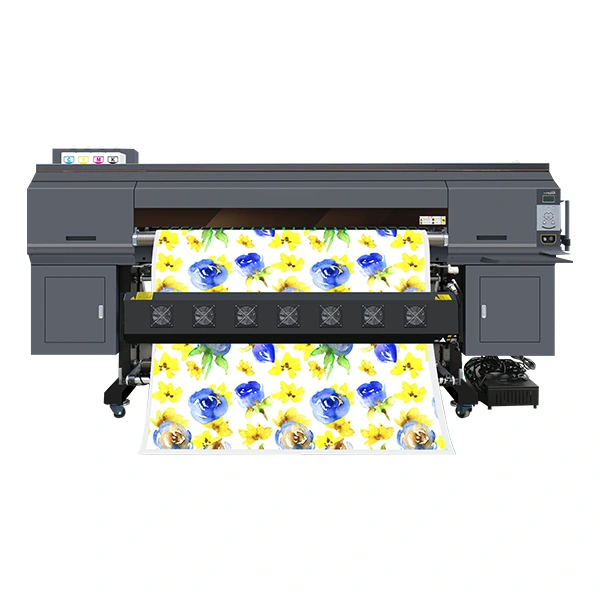
Sử dụng máy in quần áo hiệu quả bao gồm một loạt các bước để đảm bảo kết quả tối ưu. Đây là hướng dẫn từng bước:
6.1 Chuẩn bị thiết kế
Tạo hoặc nhập thiết kế của bạn bằng phần mềm thiết kế đồ họa hoặc phần mềm in chuyên dụng. Đảm bảo thiết kế có kích thước và vị trí phù hợp cho hàng may mặc.
6.2 Chuẩn bị quần áo
Chuẩn bị quần áo bằng cách đảm bảo nó sạch sẽ, phẳng, và được định vị chính xác trên trục in của máy. Làm phẳng mọi nếp nhăn hoặc nếp gấp để đảm bảo in đều.
6.3 Quá trình in
Làm theo hướng dẫn của nhà sản xuất để nạp quần áo vào máy và thiết lập các thông số in, chẳng hạn như tốc độ in, nghị quyết, và cài đặt màu sắc. Bắt đầu quá trình in và giám sát chặt chẽ mọi điều chỉnh hoặc khắc phục sự cố.
6.4 Chăm sóc sau in ấn
Sau khi in xong, cẩn thận lấy quần áo ra khỏi máy và để nguội và xử lý theo khuyến nghị của nhà sản xuất. Thực hiện theo mọi hướng dẫn chăm sóc sau in cụ thể, chẳng hạn như ép nhiệt hoặc giặt, để tăng cường độ bền.
Mẹo bảo trì máy in quần áo
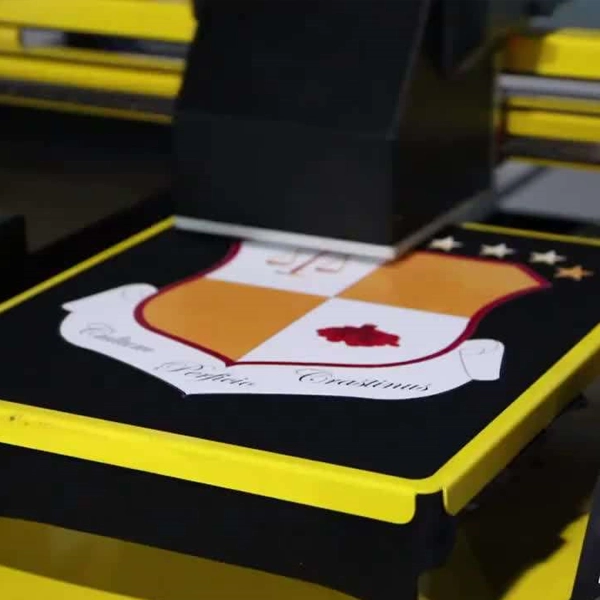
Bảo trì đúng cách máy in quần áo của bạn là rất quan trọng để đảm bảo tuổi thọ và hiệu suất ổn định của nó. Dưới đây là một số lời khuyên cần thiết:
- Thường xuyên vệ sinh đầu in, vòi phun, và đường mực để tránh tắc nghẽn và đảm bảo chất lượng in tối ưu.
- Thực hiện các công việc bảo trì định kỳ, chẳng hạn như bôi trơn các bộ phận chuyển động và thay thế các bộ phận bị mòn, theo khuyến cáo của nhà sản xuất.
- Bảo quản máy ở môi trường sạch sẽ, không có bụi bẩn để tránh bụi bẩn ảnh hưởng đến quá trình in.
- Sử dụng mực chất lượng cao và tương thích, vật liệu chuyển giao, và các vật tư tiêu hao khác để duy trì chất lượng in và tránh làm hỏng máy.
Chọn máy in may phù hợp cho doanh nghiệp của bạn
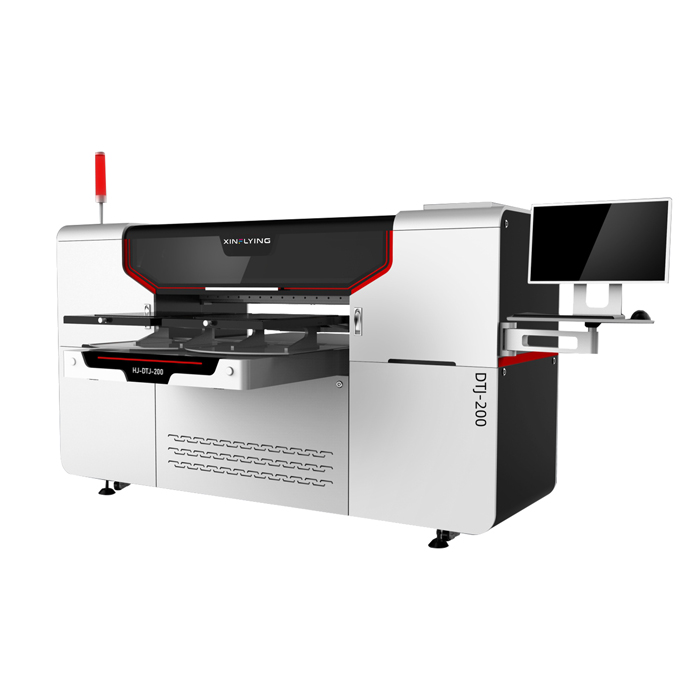
Lựa chọn máy in quần áo phù hợp là yếu tố quyết định sự thành công của doanh nghiệp. Xem xét các yêu cầu cụ thể của bạn, chẳng hạn như khối lượng in, ngân sách, và chất lượng in mong muốn, khi đưa ra quyết định. Nghiên cứu các nhãn hiệu và mẫu mã khác nhau, đọc đánh giá của khách hàng, và tìm kiếm lời khuyên từ các chuyên gia trong ngành để đưa ra lựa chọn sáng suốt.
Tương lai của máy in may mặc
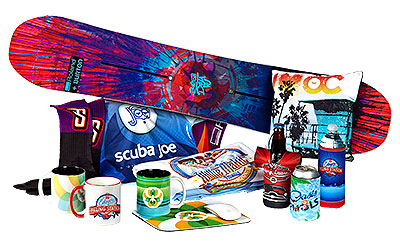
Ngành in ấn hàng may mặc tiếp tục phát triển, được thúc đẩy bởi những tiến bộ trong công nghệ và sự thay đổi nhu cầu của người tiêu dùng. Khi công nghệ tiến bộ, chúng ta có thể mong đợi máy in quần áo sẽ trở nên phổ biến hơn có hiệu quả, linh hoạt, và thân thiện với người dùng. Những đổi mới như đầu in cải tiến, tốc độ in nhanh hơn, và độ chính xác màu sắc được nâng cao sẽ tiếp tục thúc đẩy ngành công nghiệp tiến lên phía trước. Ngoài ra, thân thiện với môi trường giải pháp in ấn và thực hành bền vững có thể sẽ đạt được sự nổi bật trong tương lai, khi ngành công nghiệp phấn đấu cho các phương pháp sản xuất thân thiện với môi trường hơn.
Phần kết luận

Máy in may đã làm thay đổi ngành may mặc, trao quyền cho các doanh nghiệp cung cấp quần áo cá nhân và độc đáo cho khách hàng của họ. Với họ tính linh hoạt, hiệu quả, và chất lượng cao bản in, những chiếc máy này đã cách mạng hóa cách chúng ta tạo ra những sản phẩm may mặc được thiết kế riêng. Bằng cách xem xét các loại máy in quần áo khác nhau, yếu tố quan trọng để lựa chọn, và mẹo sử dụng và bảo trì thích hợp, bạn có thể khai thác sức mạnh của những chiếc máy này để thúc đẩy hoạt động kinh doanh của mình và đáp ứng nhu cầu của thị trường luôn thay đổi.
Câu hỏi thường gặp
1. In quần áo bằng máy in quần áo mất bao lâu?
Thời gian để in một sản phẩm may mặc phụ thuộc vào nhiều yếu tố khác nhau như độ phức tạp của thiết kế, phương pháp in ấn, và khả năng của máy. Thiết kế đơn giản có thể được in trong vài phút, trong khi các bản in phức tạp và nhiều màu hơn có thể mất nhiều thời gian hơn.
2. Tôi có thể in trên các loại vải khác nhau bằng máy in quần áo không?
Đúng, hầu hết các máy in hàng may mặc đều được thiết kế để in trên nhiều loại vải khác nhau, bao gồm bông, polyester, pha trộn, và thậm chí cả quần áo tối màu. Tuy nhiên, điều cần thiết là phải kiểm tra thông số kỹ thuật của máy và khả năng tương thích của vải được đề xuất trước khi in.
3. Những công việc bảo trì cần thiết cho máy in quần áo?
Công việc bảo trì thường xuyên cho máy in quần áo bao gồm làm sạch đầu in, vòi phun, và dòng mực, bôi trơn các bộ phận chuyển động, và thay thế các linh kiện hao mòn khi cần thiết. Tuân theo hướng dẫn bảo trì của nhà sản xuất là rất quan trọng để đảm bảo hiệu suất và tuổi thọ tối ưu.
4. Máy in quần áo có thể tái tạo các thiết kế sống động và chi tiết không?
Đúng, Máy in hàng may mặc có thể tạo ra các thiết kế sống động và chi tiết với độ chính xác màu sắc tuyệt vời. Tuy nhiên, chất lượng của thiết kế và khả năng của máy, chẳng hạn như độ phân giải và gam màu, có thể ảnh hưởng đến kết quả cuối cùng. Điều quan trọng là sử dụng các thiết kế có độ phân giải cao và chọn máy có công nghệ in tiên tiến để có kết quả tốt nhất.
5. Máy in quần áo có phù hợp cho doanh nghiệp nhỏ không?
Đúng, Máy in hàng may mặc cũng phù hợp cho các doanh nghiệp nhỏ. Họ cung cấp khả năng mở rộng và tính linh hoạt, cho phép các doanh nghiệp bắt đầu với khối lượng sản xuất nhỏ hơn và tăng dần sản lượng khi nhu cầu tăng lên. Đầu tư vào một chiếc máy đáng tin cậy và tiết kiệm chi phí có thể là tài sản quý giá cho các doanh nghiệp nhỏ trong ngành may mặc.
Vui lòng thể hiện sự ủng hộ và đánh giá cao của bạn bằng cách thích lời nhắc này nếu bạn thấy nó thực sự hữu ích.



























